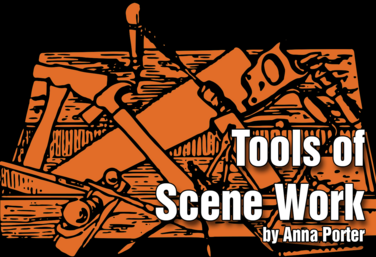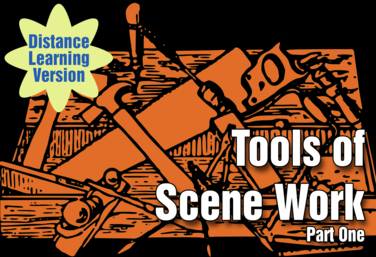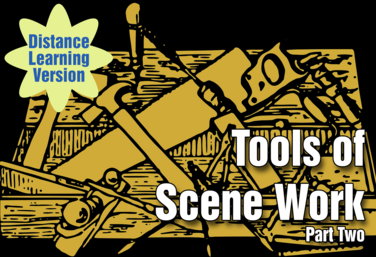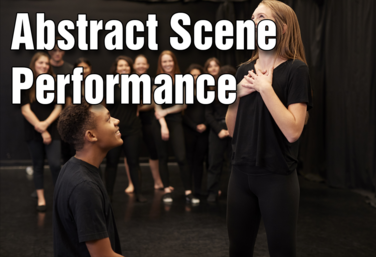Units

Tools of Scene Work
by Anna Porter

Scene Work: Part 1, Tools of Scene Work
by Lindsay Price

Scene Work: Part 2, Student Self Staging
by Lindsay Price

Abstract Scene Performance
by Annie Dragoo

Scene Staging
by Lindsay Price
Lesson Plans
Emergency Lesson Plan: Scoring a Scene
by Lindsay Price
Using Statistics as Scene Starters
by Kerry Hishon
Six-Second Scenes
by Kerry Hishon
Resources
Location List
Actions List
Character List
Emotions List
Objects List
Scenes for Classroom Study: Body Body
Scenes for Classroom Study: Boys and Girls
Scenes for Classroom Study: Still as Stone
Scenes for Classroom Study: Sunday Lunch
Scenes for Classroom Study: Sweep Under Rug
Scenes for Classroom Study: The Bright Blue Mailbox Suicide Note
Scenes for Classroom Study: Look Me in the Eye
Scenes for Classroom Study: Betweenity
Scenes for Classroom Study: You
Scenes for Classroom Study: Among Friends and Clutter
Why so Emotional? A Guide for Highly Charged Scenes
Scenes for Classroom Study: The Four Hags of the Apocalypse Eat Salad at their General Meeting
Scenes for Classroom Study: Hoodie
Scenes for Classroom Study: Body Body (Scene 2)
Scene Work: Where do I Start?
Scenes for Classroom Study: The Snow Show
Scene Writing Rubric
Scene Performance Rubric
Dialogue Prompts
First Lines
Compare and Contrast (Ancient Greek)
Duo Scene Information Sheet
What Does Your Character Want to DO?
What STOPS Your Character?
6 ft Scenes
Dealing with Absent Students During Scene Work: The Group Scene Project
PLCs

Staging Scenes in the Classroom
Hosted by Matt Webster, Shelby Steege, Jeremy Bishop